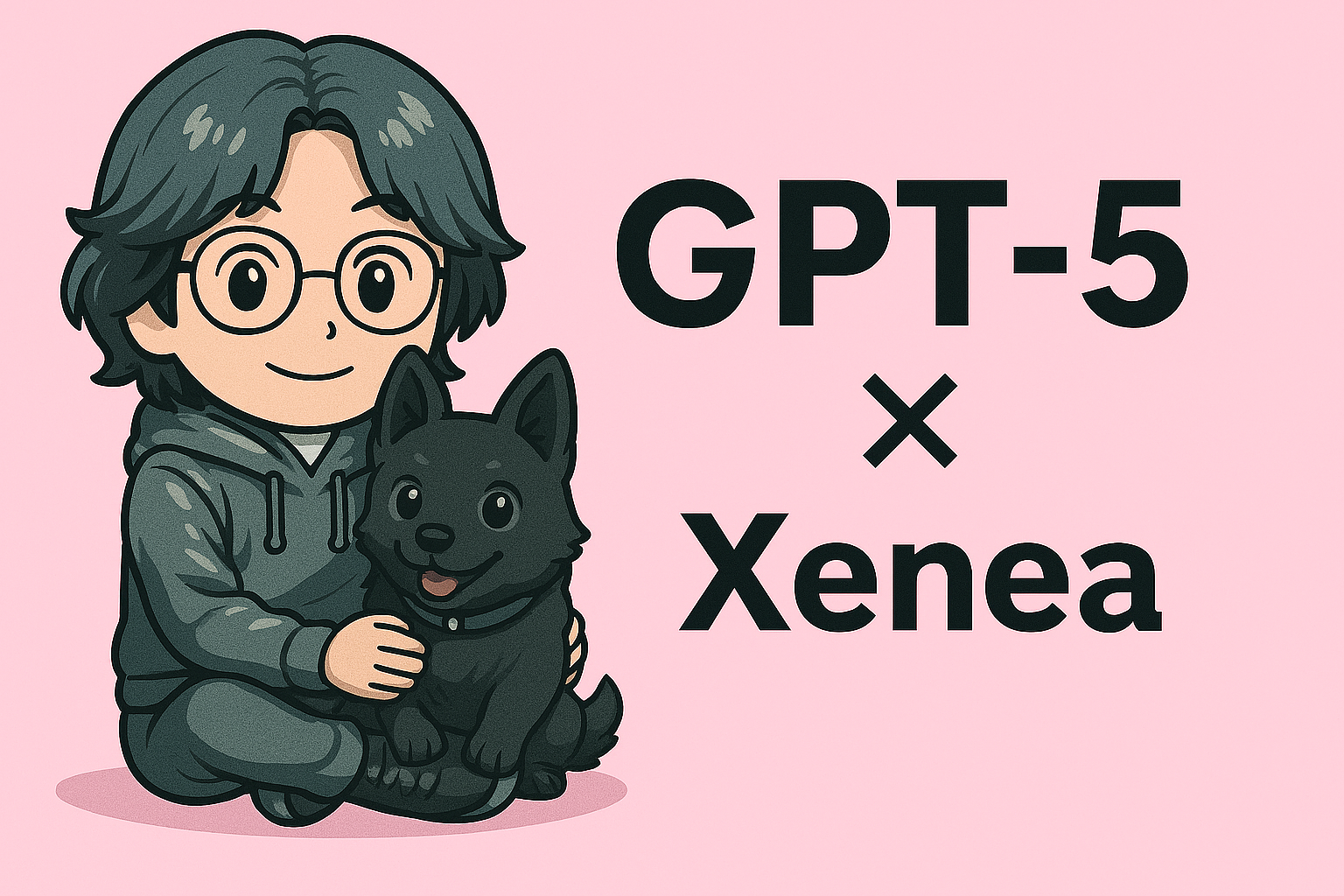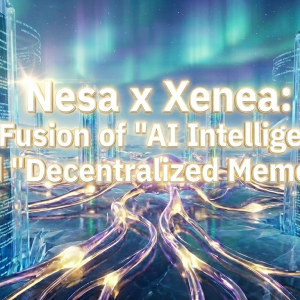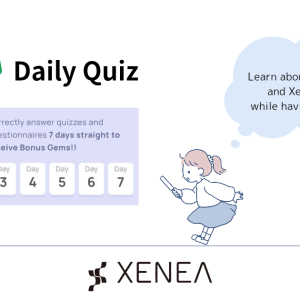Xenea’s decentralized storage that protects the brain of GPT-5

[Chain of Thought by YUMA Series #17]
This X-Space features YUMA, Co-Founder of XENEA, who discusses the essential infrastructure needed as AI evolves from a mere tool into autonomous agents, prompted by OpenAI’s announcement of GPT-5 and the release of its first open-weight model.
🎙️Thank you for joining us in this space.
Chain of Thought #17 :
GPT-5 ls Here- Can Xenea Power the Next Wave of Al?🔽 If you missed it, you can listen to the archives here.https://t.co/58uqg56FS6
— Xenea (@Xenea_io) August 8, 2025
In envisioning a future where AI becomes a partner in our daily lives, we explore how the data and memory layers supporting these agents should be built. The discussion highlighted both the challenges faced by existing systems and Xenea’s vision for an innovative decentralized dynamic storage network.
This is not just a matter of technical advancement — it leads to a deeper philosophical discussion about AI ownership, trustworthiness, and the very fabric of our future digital society.
A recording is also available on YouTube, where you can enable subtitles for translation into your own language:
A New Era of AI: The Rise of Autonomous Agents
OpenAI’s latest announcement marks a turning point where AI shifts from being a “tool” to becoming a “partner” deeply involved in our lives.
This transformation raises fundamental questions not only about AI’s capabilities but also about the nature of the infrastructure that underpins it.
OpenAI’s Groundbreaking Announcement and Its Impact
OpenAI introduced GPT-5, with significantly enhanced reasoning, coding, and factual reliability. It also released its first open-weight model, allowing developers to download, fine-tune, and run the model locally.
This is more than a product update — it signals an ideological shift: “AI will not just be consumed — it will be owned, modified, and integrated into countless unique ecosystems.” This change marks an important step toward a future where AI is an indispensable part of our daily lives.
The Three Stages of AI Agent Evolution
- Narrow Autonomous Agents – Capable of completing specific tasks independently.
- Semi-Autonomous Life Management – Proactively managing multiple life domains with minimal input. Expected to become mainstream within the next three years.
- Fully Autonomous Agents – Seamlessly making most decisions across personal and professional realms. With AI’s exponential growth, this stage could arrive much sooner than expected.
The Challenge of Dynamic Data and the Need for Decentralized Infrastructure
For AI agents to reach their full potential, they require vast data access and the ability to update information in real time — in other words, a “memory” and a “brain.”
However, existing data management systems are ill-equipped to meet these new demands.
Why AI Agents Require Dynamic Data
Traditional generative AI operates on large, mostly static datasets updated occasionally. Autonomous AI agents, however, require dynamic data — information that changes by the second, is written by multiple parties, and must be trustworthy.
Dynamic data is the lifeblood enabling AI agents to act on our behalf and respond to ever-changing circumstances.
The Limitations of Current Decentralized Storage
Platforms like Filecoin and Arweave excel at storing static archives — images, documents, immutable logs — but are not optimized for real-time read/write demands.
As a result, even Web3-native AI services often quietly rely on centralized cloud providers like AWS, Google Cloud, and Azure for live data. This creates a “reality gap” where branding is decentralized, but operations are centralized.
If an AI partner’s memory is owned and operated by a corporation, can we truly say we own, trust, and control it?
How Decentralized Dynamic Data Changes the Game
In a decentralized environment, dynamic data brings major advantages:
- Live Updates – AI agents can instantly record, overwrite, and retrieve new information.
- Auditability – Verifiable logs of when and how actions were taken.
- Portability – Freedom from lock-in to a single provider.
- Community Ownership – Storage layers run and governed by global networks, not a handful of corporations.
Xenea’s Vision for the Future of AI Infrastructure
To close this “reality gap” and provide a foundation for truly functional AI agents, Xenea proposes an innovative solution designed for the next generation of AI and the DePIN era.
Xenea’s Layer-1 Innovation
Xenea is not just another Layer-1 blockchain — it is a Layer-1 deeply integrated with a decentralized dynamic storage network, purpose-built to handle real-time, high-frequency data.
AI agents can write data to Xenea as they act, instantly anchoring it on-chain for verification. Access controls ensure sensitive data is visible only to those with the proper keys, while the infrastructure is community-run via the Proof of Democracy consensus.
This bridges the gap between Web3 branding and true Web3 functionality.
Practical Use Cases for Dynamic Data
Dynamic data is not a “nice-to-have” — it’s essential.
- Healthcare AI Agents – Monitor patients, adjust medication schedules, and update doctors in real time.
- Trading Bots & Financial Agents – Execute trades in milliseconds with auditable decision records.
- Smart City Systems – Manage inputs from thousands of IoT devices for traffic flow or energy balancing.
- Logistics Automation AI – Adjust fleet, delivery, and inventory management dynamically.
These are scenarios where existing decentralized storage solutions fall short — and where Xenea excels.
Community-Led Ownership and Trust
Xenea emphasizes that dynamic data storage forms the foundation of trust, safety, and ownership.
Its upcoming node sale fractionalizes node ownership into NFTs, allowing anyone to participate without costly hardware or maintenance. Users support professional operators and receive rewards, creating a model where AI “brains” are truly owned by users — not rented from corporations.
Shaping the Future of AI Through Community Power
Xenea aims to keep AI’s future open to everyone, not confined to corporate ecosystems.
Affordable Node Ownership
Node NFTs are expected to be priced under $1,000. For those with limited budgets, Xenea encourages community pooling — e.g., 1,000 people contributing $1 each to collectively purchase a node. Educational sessions on pooling methods are planned.
This ensures that anyone, regardless of budget, can own part of AI’s foundational infrastructure.
Xenea’s Long-Term Mission
Xenea will serve as a permanent memory layer for AI agents, storing event logs, decision histories, and evolving datasets in a verifiable, searchable way — critical for auditing, debugging, and accountability.
If AI agents remain tied to centralized infrastructure, the future will be dominated by a few tech giants. Xenea offers a counter-model that keeps the data commons in public hands.
True to its name — meaning “a gift to people far away” — Xenea is building an infrastructure to preserve human knowledge and history uncorrupted for generations to come, for the age of AI and DePIN.
XENEA Wallet
As your first step into the Xenea world that powers the future of AI infrastructure, start with XENEA Wallet.
Enjoy daily missions and rewards through the wallet, participate in Proof of Democracy mining, and be part of future $XENE token distributions.
If you’re new to XENEA Wallet, download the app and sign up with the invite code to receive 1,000 Gems for free 😊
[PR]
1️⃣ Download the App
2️⃣ Enter the invite code: h3dYzHejPI
( Paste it into the “Enter the Invite code if you have” field )
3️⃣ Sign up with your Google or Apple account


Comment